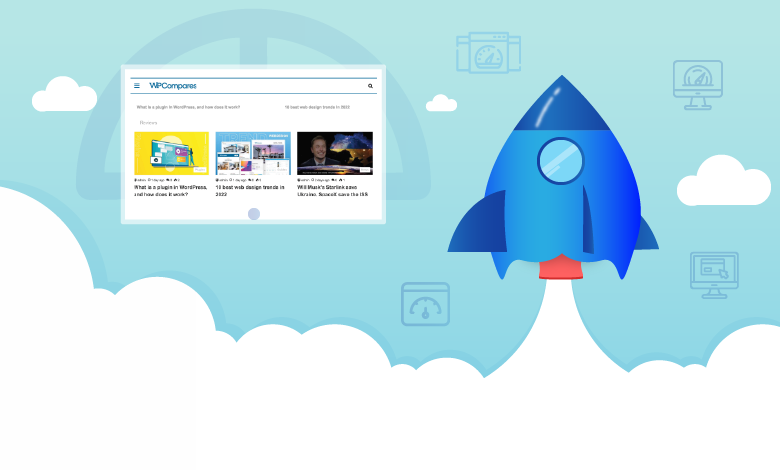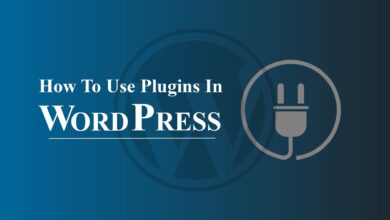
Are you struggling with how to speed up the WordPress site to get a better experience? Here is all you need to know!
Everything in today’s competitive world revolves around convenience and precision. Start Website Optimization, If your site takes longer to process than it should, it’s safe to assume that your visitors and bottom flow will suffer as a result.
Numerous programmers and company executives are now aware of this reality and are asking how to speed up WordPress blogs.
The essential for understanding will explain why quick loading times are important and provide some strategies for improving the efficiency of your WordPress website.
Throughout 2010, Google considered website performance a determinant of desktop queries’ performance. Site speed is now a search ranking for search queries as well, as of 2018.
Even while speed enhancements will only benefit a tiny fraction of sluggish web pages, quicker loading times result in a better customer experience.
As a result, more income. In fact, according to Google research, as website load times increase, so does the website traffic.
Let’s find out how to speed up the WordPress site in no time.
WordPress Page Load Time:
WordPress is an open-source content management system that has swept the globe. In addition, approximately 75 million websites have been built on the network.
To induce hallucinations beautifully and let your branding shine throughout, you’ll require extensions, templates, and other resources, just like with any other site construction program.
Regretfully, irrespective of your content management system, such tools may slow operations down.
What Is the Importance Of Site Speed?
The nostalgic shrieking of a dial-up router indicates that your website will soon download a thing of the past. Visitors nowadays demand online sites to load quickly. Indeed, 40% said they would quit a website if it took longer than three seconds to load.
The finest move you can make for your organization is to have a fast WordPress website. If you do not do so, you will undoubtedly lose resources and support. The reason for this is that internet users are apprehensive. More than half of all smartphone subscribers admit to abandoning a web page since this needs to wait.
It’s also important to keep in mind that websites that load in 1-2 seconds have a threefold higher exchange rate than those that take 5-10 seconds to complete.
How To Speed Up The WordPress Site In 2024?
There are many reasons your websites may take a long time to load. However, the most typical causes include sluggish interconnection, caching, screen resolution, and additional technical causes such as render-blocking JS.
Whenever it comes to Website site performance, there are numerous aspects to consider, including your theme’s coding, certain plugins you may be utilizing, server settings, picture file sizes, and more.
1. Perform A Site Speed Analysis:
The next stage in optimizing site speed is to analyze how quickly your page loads. If you download a plugin or perform another modification to your website and still want to know how it impacts website loading speed, you should monitor website performance.
Use software such as the WP Engine Speed Tool to assess loading performance and get WordPress-specific website performance advice on making your site operate faster. After entering your blog’s address, you’ll receive an email with a personalized analysis of how quickly your website runs and precise suggestions to speed it up.
2. Disable Any Plugins Or Themes That Are No Longer In Use:
Apart from constantly keeping your plugins and themes updated, uninstalling those no longer in use will be the next step toward a faster website. Unwanted plugins and themes not only help prevent future risks but can also degrade the speed of your WordPress website.
You must first disable an unneeded plugin before deleting it. Then go to your menu of expired plugins and eliminate those you don’t need.
3. Organize Your Media Collection:
You may amass photos that are no longer in use over time. It would be best to eliminate unneeded material to clear up space.
You may either use a plugin like Media Cleaner or do it directly to get rid of unwanted media. To eliminate useless multimedia content individually, go to Add Media -> Media Library -> Unattached and remove information that is no longer being used.
4. Defragment Your Database:
If you don’t examine it, your WordPress repository will fill up with junk over time. This needless baggage might cause your site to load slowly.
You may, meanwhile, minimize the size of your collection for quicker startup by doing frequent cleanups.
If a post has 100 KB of material and five modifications, the overall space lost is around 500 KB.
Sweeping up your database individually using PhpMyAdmin is possible, but it can be difficult and dangerous if you do not even understand what you’ve been doing. Downloading a plugin to do this operation is the better choice if you aren’t a computer wiz.
WP-Sweep and Comprehensive Data System Cleanup are both good picks for sweeping throughout your database and removing outdated modifications, spamming comments, MySQL searches, and other unwanted items.
5. JavaScript And CSS That Are Rendering-Blocking Should Be Removed:
Since you’ve been utilizing web page testing tools to check the site performance, you might well have come across the same tip, which may have been confusing.
You’ll probably see a lot of JavaScript code loading before your “starting render” section if you check your publication’s waterfalls display using software like webpagetest.org or Pingdom.
6. CSS, HTML, And JavaScript Should All Be Optimized:
CSS, HTML, and other system software items can accumulate over time, making your allowing operators resemble molasses. Consider minifying your website’s code to provide it with a boost in performance.
The infrastructure of your website will be tuned to be a lean, mean machine thanks to minification. This approach involves removing extraneous characters such as blanks, line spacing, and remarks from HTML, JavaScript, and CSS files to reduce disk space.
As little more than a consequence, the quantity of transmitting data demanded decreases, allowing applications to execute faster and websites to load speedier.
7. Image Optimization:
Images are essential for retaining a user’s attention on your website. Although your website may have a lot of lovely pictures, it’s a great idea to optimize these photos for quick website load speeds.
You may optimize your photographs in various methods, including condensing them, providing alternative text and labels, and building an image sitemap.
8. Long Pages For Lazy Loading:
Lazy Loading is a huge time-saver for one-page web pages and blogs with a massive home site. The items further downstream on your website aren’t displayed till the user scrolls vertically to see them, which is called lazy Loading.
This helps your website start generating quicker by avoiding downloading every one of your big web page’s information simultaneously.
9. Per-Page Comment Limit:
Although it’s great to have so many people read your blog content, a lot of people commenting might slow down the page load speed. It’s wise to divide the comments thread across web pages to reduce the time required for them to display.
10. Redirects Should Be Minimized:
Although redirects have many purposes, excessive redirects, including 301 redirects and redirect, sequences can cause significant delays. Please keep your server’s additional details queries to a minimum.
Final Verdict:
The most significant benefit of reducing your blog’s website performance is significantly improving your customers’ perception. Whether they will be utilizing handheld apps or Desktops, the situation is the same. It will also help you rank higher in search engine results pages (Engine result page (SERP).
After all, reducing your hosting’s broadband use and increasing site loading times on the user’s computer will only help you in the short and medium haul.
We hope that this article has guided you on how to speed up the WordPress site for better performance.



